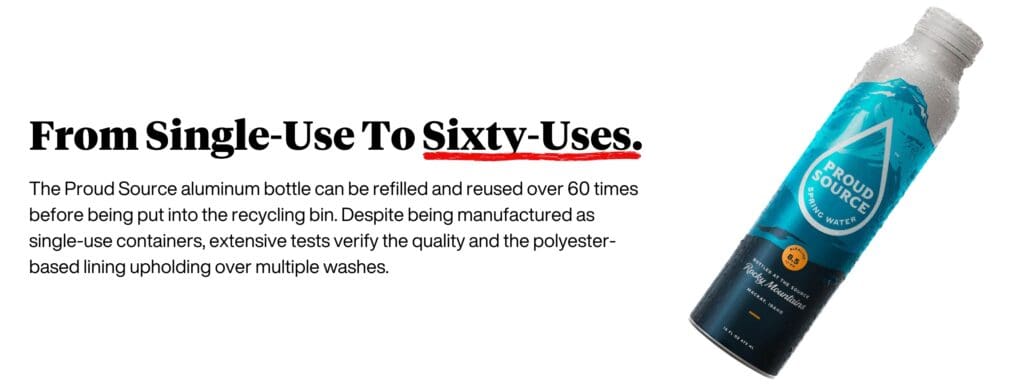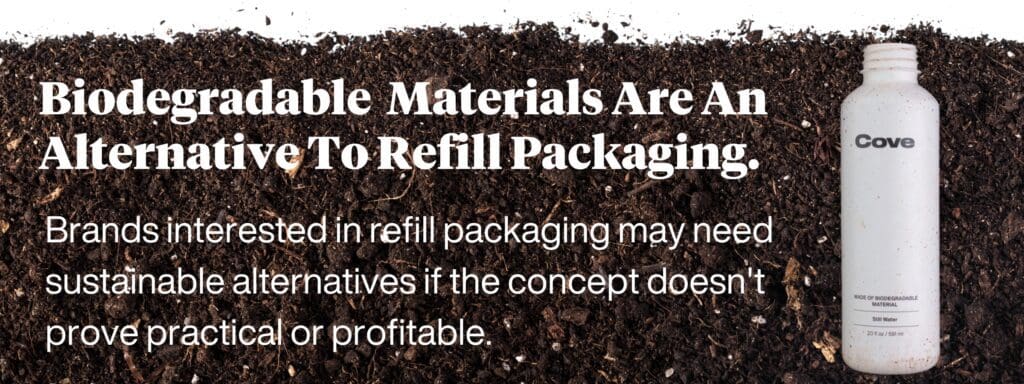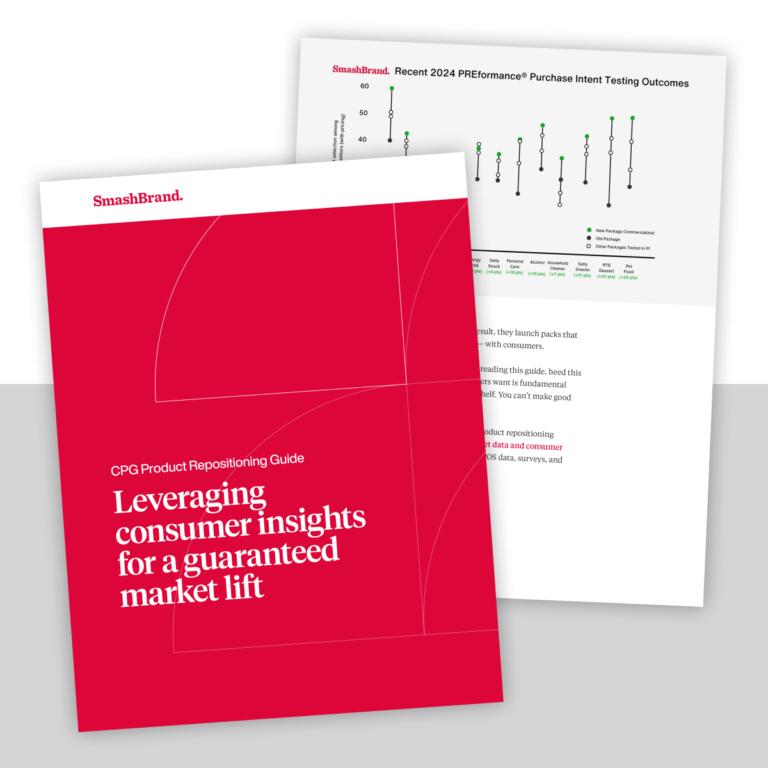The throw away generation is quickly coming to an end. More and more consumers expect brands to package their products using sustainable materials to support a better environment, and retailers are heeling this movement. The circular economy impacting the CPG industry and refill packaging is one option brands have to lower their environmental footprint.
According to research, 37% of consumers actively seek products packaged in environmentally friendly materials and will pay 5% more to get them! These statistics show a need for sustainability, but does it mean your brand will see greater profitability and capture market share through refill packaging?
Sustainability isn’t just a packaging design trend anymore; it’s an expectation. Of course, using environmentally sustainable packaging is a challenge for many brands. Small brands may struggle to meet the cost and resource requirements, whereas big brands will struggle to implement this change across their many moving parts.
Then there’s the issue of practicality. Beverage or cleaning supply manufacturers need plastic for packaging. Glass spray bottles would be quite cumbersome, and paper soda bottles would get sticky in no time. So, what can these companies do to adhere to the wishes of consumers?
Let’s learn how brands use refill packaging to boost sustainability and determine whether a refill solution is right for your brand.
What Is Refill Packaging?
Refill packaging is a sustainable packaging solution allowing consumers to keep and reuse a container multiple times instead of throwing it away after one use. We see this type of packaging in categories such as
The aim is to reduce plastic waste by encouraging reuse. With refill packaging, manufacturers produce durable, convenient containers that consumers will want to use repeatedly rather than dispose of after a single use.
Refillable packaging isn’t a new trend. In fact, the refill container is as old as it gets in the CPG industry.
The Importance of Refill Packaging For CPG
Think about beverage companies. They’re notorious for using single-use plastic bottles. Research shows that over 20,000 plastic bottles are sold every second worldwide. Of those millions and millions of plastic bottles, we recycle only 7% into new bottles. You don’t have to be a mathematician to see that this is bad and that solving the plastic packaging problem for water will change the world.
What if manufacturers could produce the same, wallet-happy plastic bottles but make them so people don’t want to throw them away? Make them convenient enough that consumers will want to use them repeatedly. This is refill packaging.

The Differing Approaches to Refill Packaging
For refill packaging, brands can take several approaches.
- On-Site: A consumer can initially purchase your product or buy the associated container. They then return to the retailer to replenish their product at a refill station.
- Re-manufacturer: Popular with glass, the consumer can return the bottle to their grocer. The brand creates a pick-up schedule to collect and reuse the bottles in future production.
- Additional SKU: Brands can create a durable (often bulk) sized package with an accompanying version of the same product in a cardboard or flexible packaging solution. Consumers refill the product into the original packaging.

Ecommerce Vs. Omnichannel
Aligning with the acknowledgment that refill packaging is a desirable choice for consumers, ecommerce CPG brands can find success by pitching reusable solutions through their marketing efforts. The attracted interest and higher 1st purchase price point can help ecommerce brands recoup some of their ever-growing customer acquisition costs.
In-store, where consumers see the product against shelf competitors, may experience a different outcome. The higher price point and additional workload may struggle to compete against equally sustainable brands that take a different approach.
The Benefits of Refill Packaging
From a CPG brand strategy perspective, there are many reasons your company may want to integrate refill packaging into the customer journey. Here’s a look at four of the top reasons.
Reducing Our Environmental Impact
Of course, reducing waste is the primary benefit of refill packaging, but businesses need more than that to make it justifiable. They need complex numbers and proven facts. They need to know that it impacts buyers.

Capitalize on the Sustainability Movement
As stated, 37% of consumers actively seek environmentally friendly products. As time goes on, that number will rise. For instance, 83% of Millennials try to be environmentally conscious, compared to 77% of older generations.
By using refill packaging, you’re showing the world that your brand thinks about the environment. Refill packaging helps you break into the sustainability consumer market share. Even if you still use plastic in your CPG packaging designs, refill packaging can position your brand as a hero to the environment.
Build Long-Term Consumer Relationships
What’s the best kind of customer? A repeat customer.
When you make a product with refill packaging, you reward consumers for returning and doing business again. If a consumer buys your refillable product and runs out, she must return to get refills. And who is she going to get refills from? You.
Not only does refillable packaging promote long-term customer relationships, but it can help you beat out the competition. If someone already has your refillable package, he will not pay attention to your competitors. He’s going straight for the refills that work with your system.
Reduce Packaging and Transportation Costs
Which is cheaper: producing a million single-use plastic bottles or 100,000 refillable bottles? You can cut production costs exponentially if each consumer refills a package ten times. While it might cost a little more to design and produce higher-quality refillable packaging, you won’t need to produce as many. The upfront payout gives you serious long-term cost savings.
Refillable containers can significantly reduce shipping costs for major producers by shipping large quantities of products. Products like beverages, perfumes, and cleaning solutions are mostly water, which everyone has at home. If you turn your product into a concentrate (just add water!), you can eliminate the excess size and weight.
Two cleaning supply companies, Blueland and Dazz, switched from single-use bottles to reusable bottles and dissolvable tablets. Without the need to ship so water-filled bottles, they could cut transport costs by nearly 80%!
The Risks Of Refillable Packaging
As with everything in life, we must weigh the downside of refillable packaging to determine if the risk is worth the payoff. Here’s a look at some potential issues your brand may face if choosing this sustainable solution.
Sustainability vs. Convenience
Although refillable products are better for the environment, you may need to offer more incentives to persuade consumers to make the switch. Your packaging needs to be both convenient and sustainable. If it’s a pain to refill your containers, nobody will buy them. Poor refillable package design can drive away customers more than if you kept your single-use packaging.
Brands need to consider their refillable packaging needs and develop a convenient product for ease of use. Drop a tablet into a reusable bottle and add water: perfect. Require six different products mixed and a chemistry degree: no one will buy it. If your refill packaging is too difficult to use, you risk losing the brownie points you earned for sustainability.
Retailer Acceptance
Retailers are looking to build their businesses on sustainability, but that doesn’t mean they will give away shelf space. Asking retailers to stock your oversized package or your refillable repeat purchase is asking them to say no to another product.
Is your product worthy of such prime real estate? Consider how your refill will affect retail partners.
Negatively Impacting The Packaging Experience
Even the simplest refills are more challenging than buying a done-for-you SKU. Everything from hard-to-pour containers to leads that, for the life of you, will not reseal properly downgrades the packaging experience. Consider a different packaging approach if you cannot create a positive refill experience that is consistently repeatable.
Household Compliance
“You threw away the bottle? I was going to refill that!”
Mom might make the purchases, but who is responsible for throwing away the trash or refilling the product? If you cannot ensure that your packaging is distinct and looks like it should last a while, refill packaging may not be the best approach.
Testing To Determine Shelf Impact
Consumer interests are not the same as purchase intent. Leaning on a focus group to determine if you should go the refill route may send your product on the highway to nowhere.
There are many variables to shelf performance beyond what consumers “say” they want. The categories of retail partners, household size, income level, and other factors will all play a role in determining whether the consumer will support (and continue to support) the reuse model.
How To market Refillable Packaging
How do you attract the eyeballs of the environmentally-conscious consumer? We’ve some ideas to support your sustainable CPG marketing strategy effectively.
- Take a yin & yang approach, showing the problem that plastic creates and how your solution is the most sustainable alternative to it.
- Show the entire family getting behind the idea of a reusable product and how kids love being active participants in sustainability.
- Provide a cost comparison between your product and the single-use competitors.
- Actively report on the environmental impact of your refillable packaging.
- Creating blog articles helps consumers gain a better understanding of sustainability.
- Integrate smart packaging into your design that gives consumers a reason to re-scan your product packaging every time they refill. Perhaps it’s a matter of how much of an impact their reusable container has had? Just a thought.
Alternatives To Refill Packaging
Perhaps you’ve determined that refill packaging won’t work for your brand. Don’t worry, you can use an alternative packaging solution to promote sustainability.
- Create compostable packaging that returns to the earth.
- Develop repurposed packaging that gives new life to existing materials.
- Build reusable packaging that gives it new meaning.
- Last but not least, become 100% recyclable packaging.

Packaging Design Guaranteed To Perform
Are you ready to build a best-selling brand? We can help! Smashbrand is a data-driven brand development and packaging design agency. Our full-stack package design process guarantees shelf performance; whether it’s a new product, brand extension, or packaging redesign, we can help. The data collected through our package design testing ensures that you exceed the retailer’s slot revenue expectations.
Subscribe to
Nice Package.
A monthly newsletter that unpacks a critical topic in the FMCG & CPG industry.
Free Resource.

CPG product repositioning guide.
Explore the five undeniable signs your CPG product needs repositioning along with strategies for leveraging consumer insights for a guaranteed market lift.
Learn More About CPG product repositioning guide.